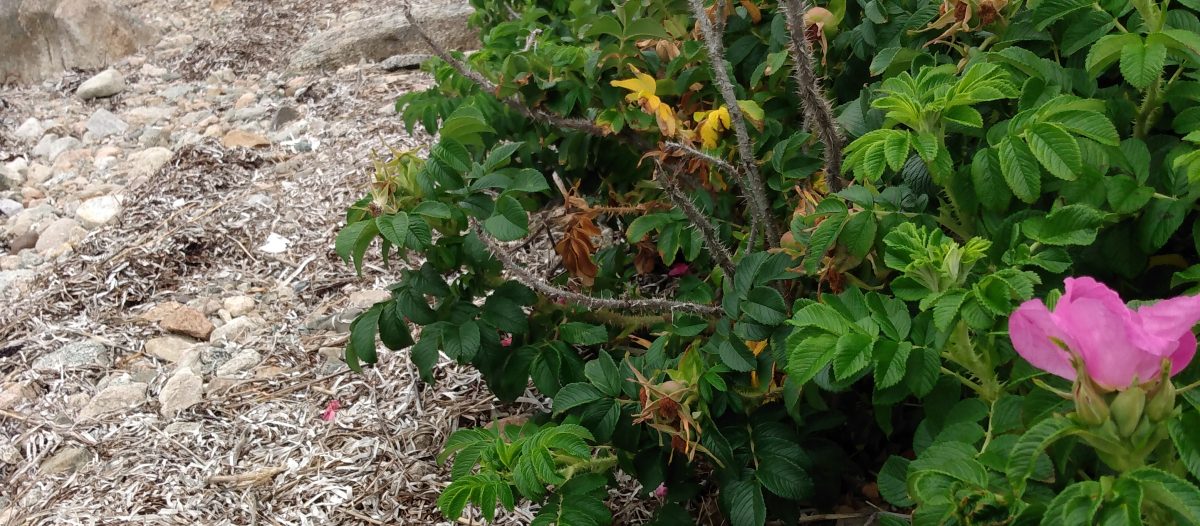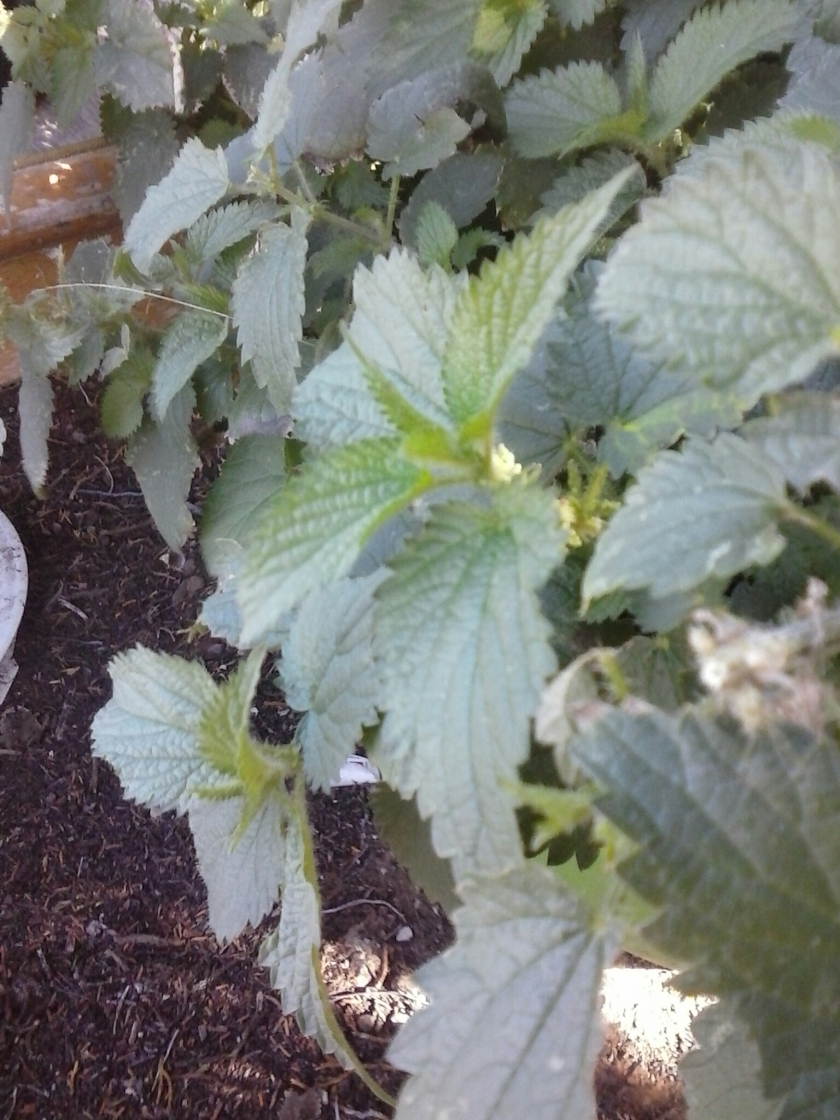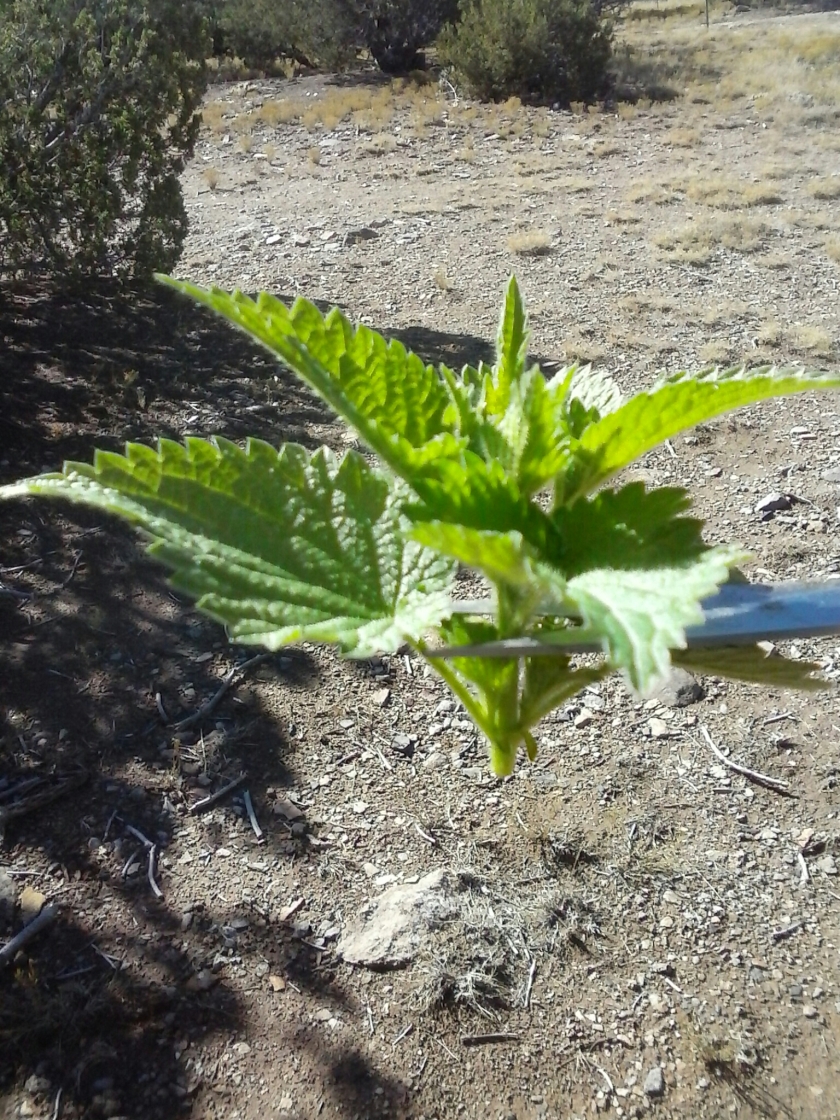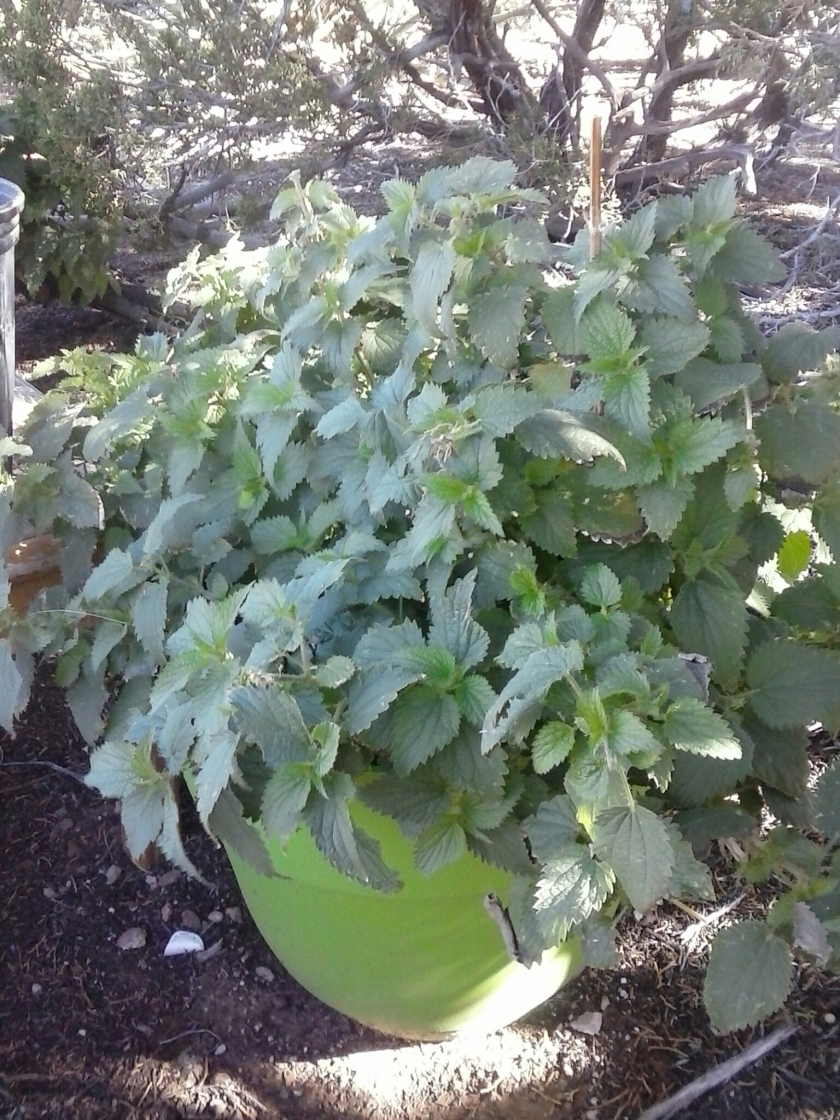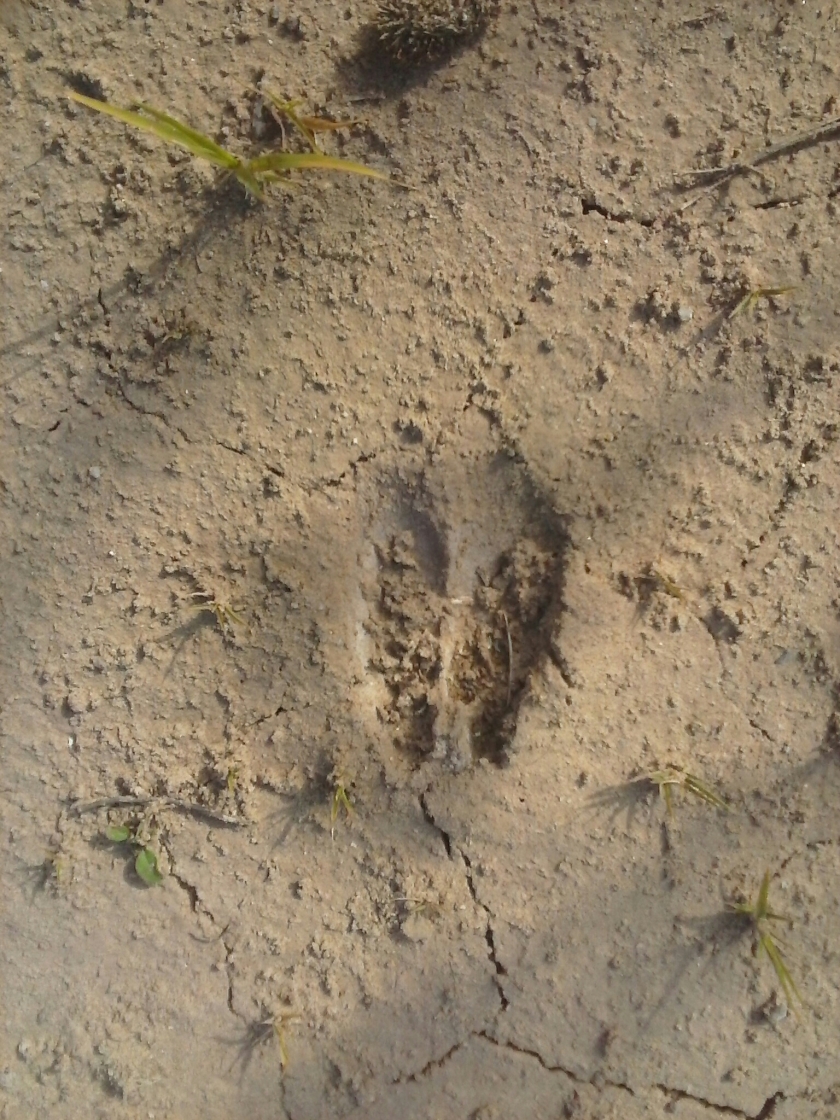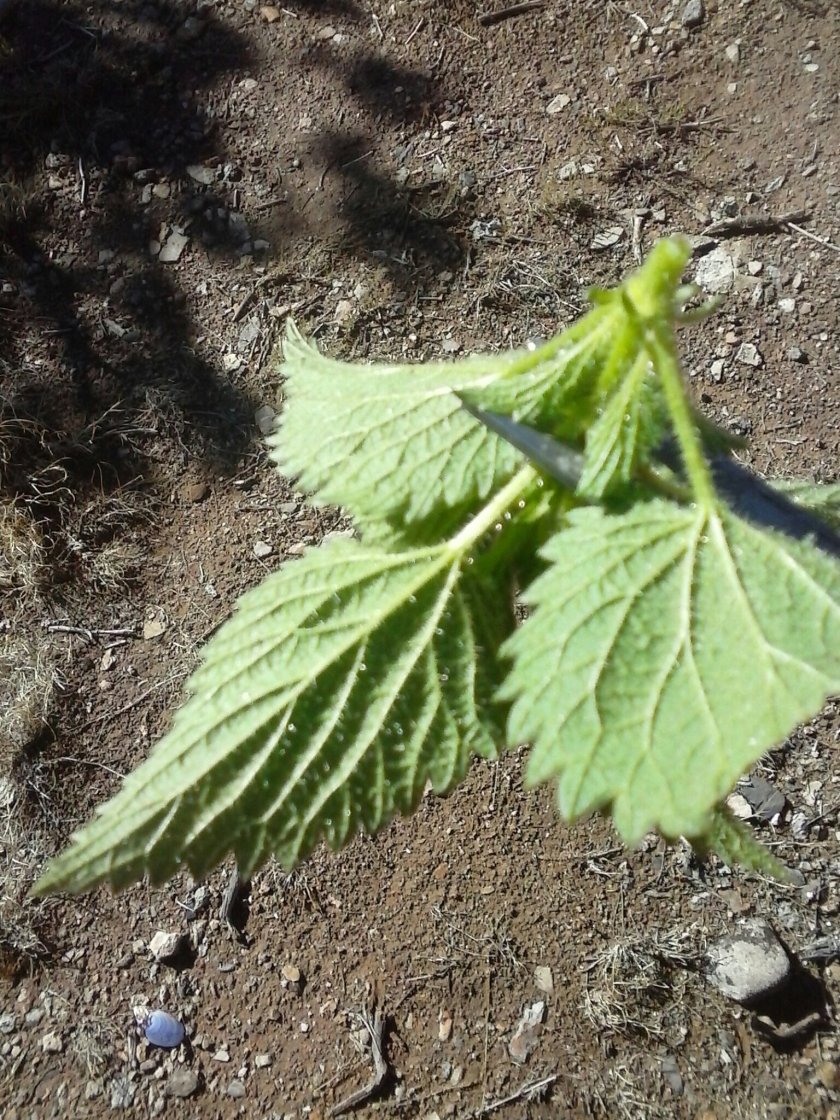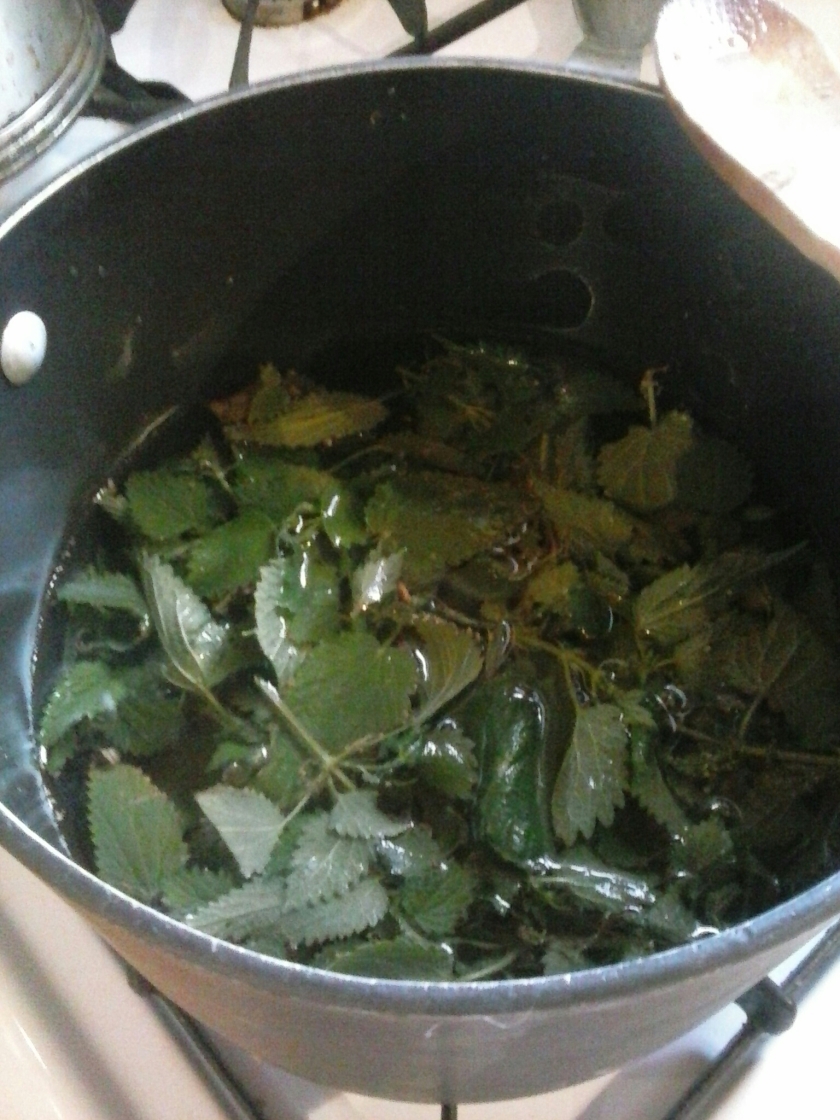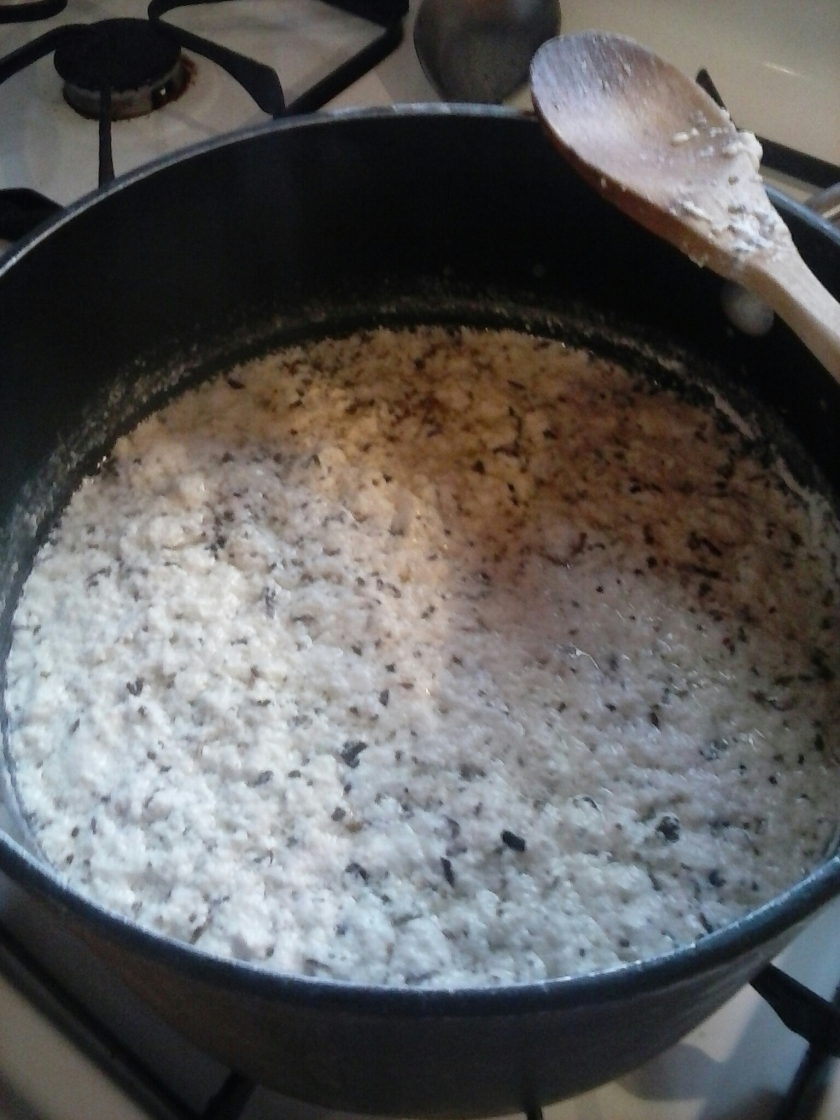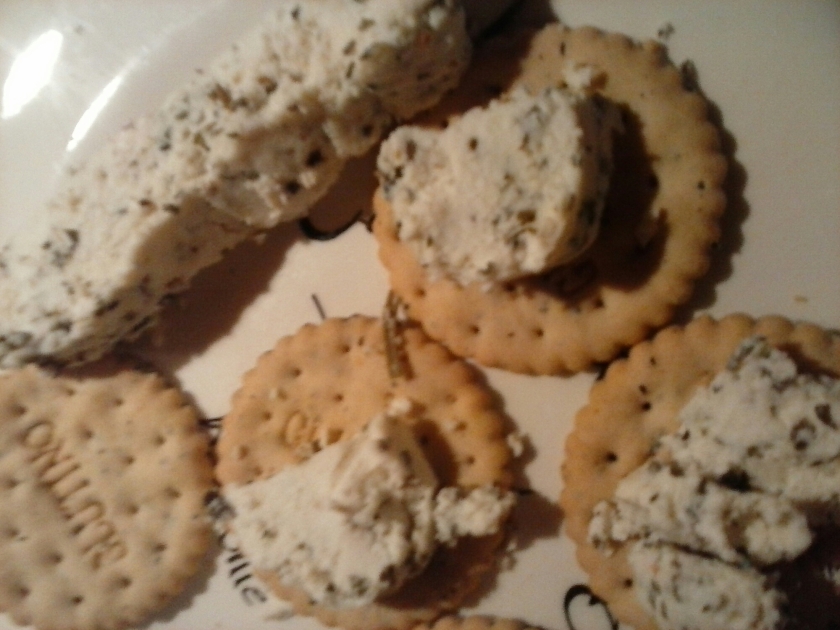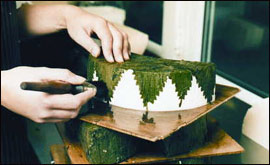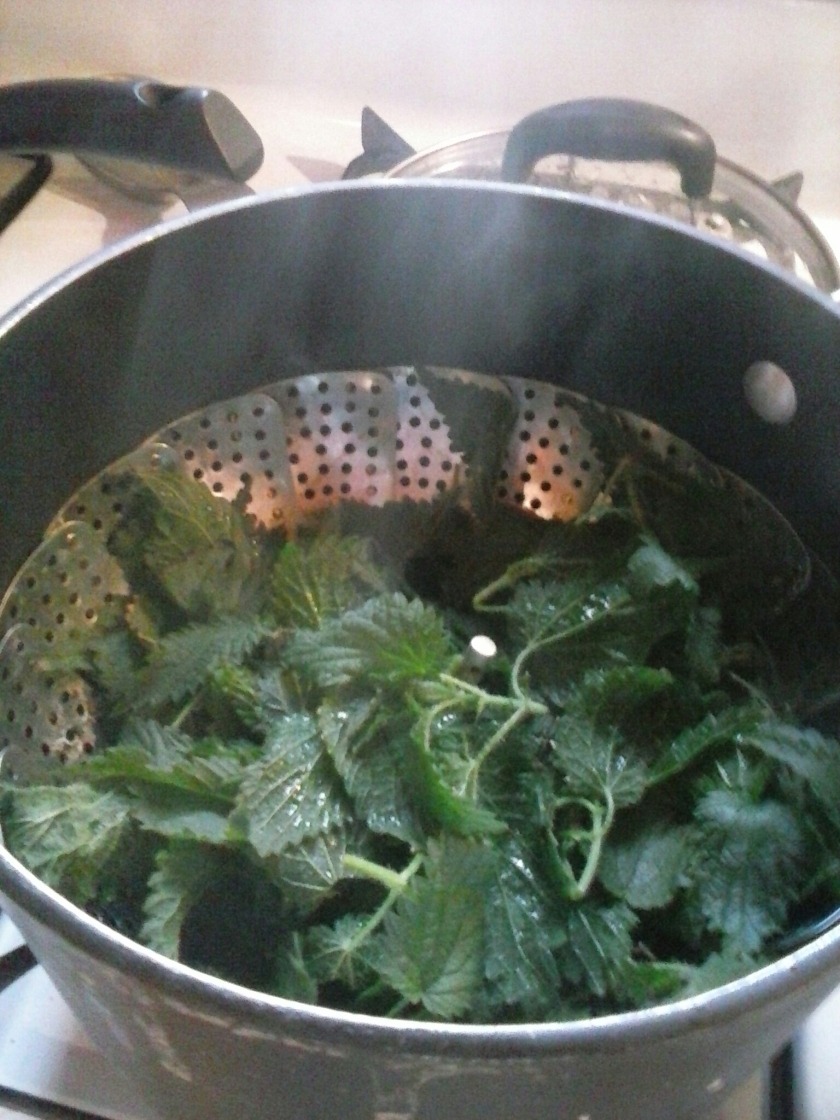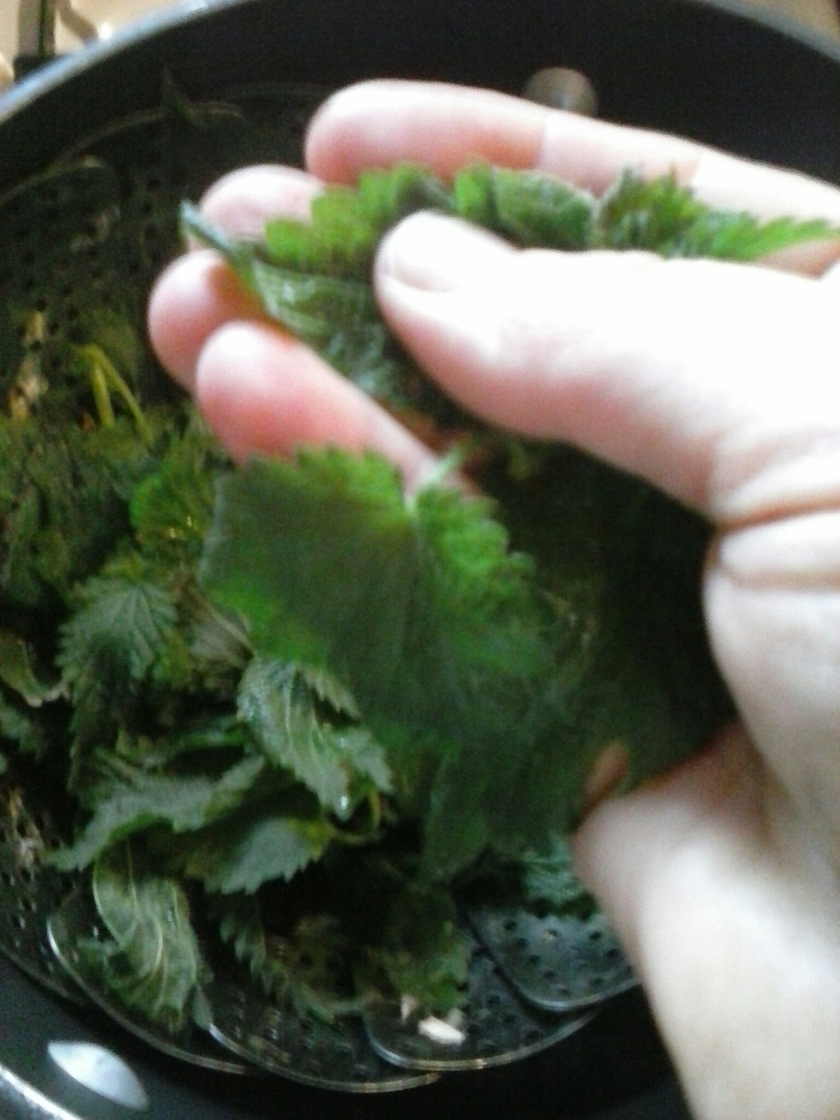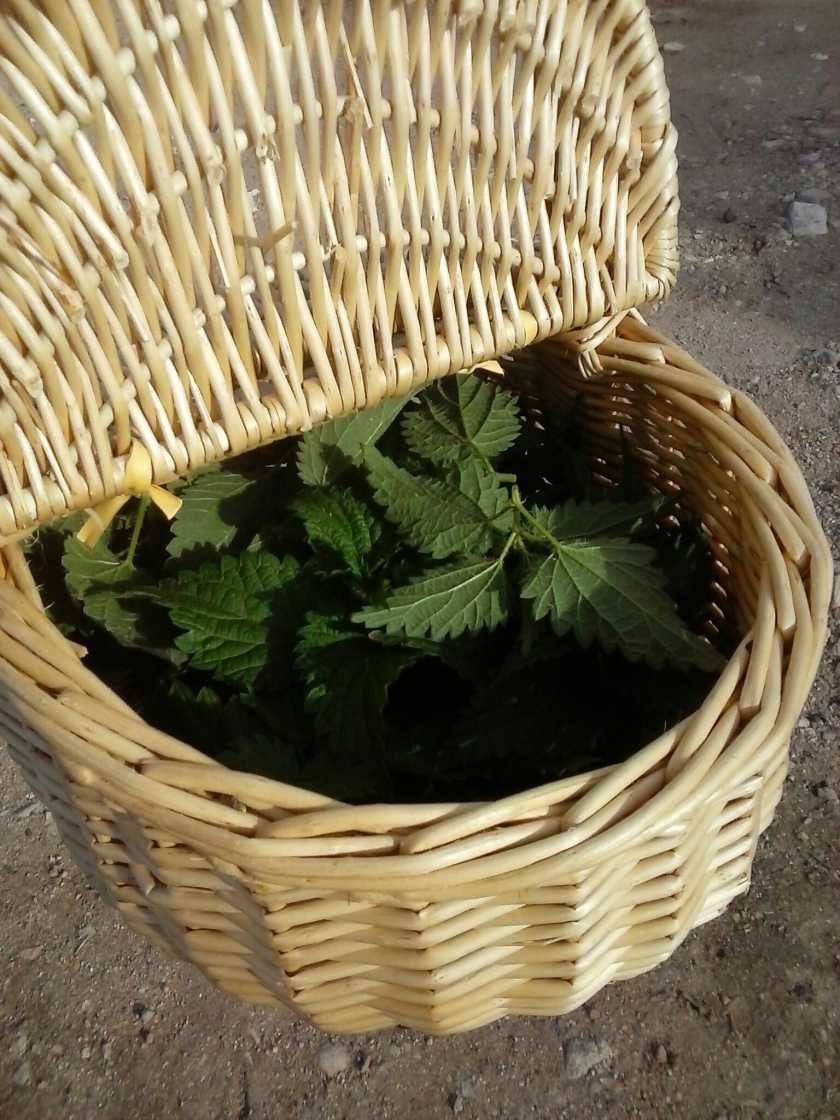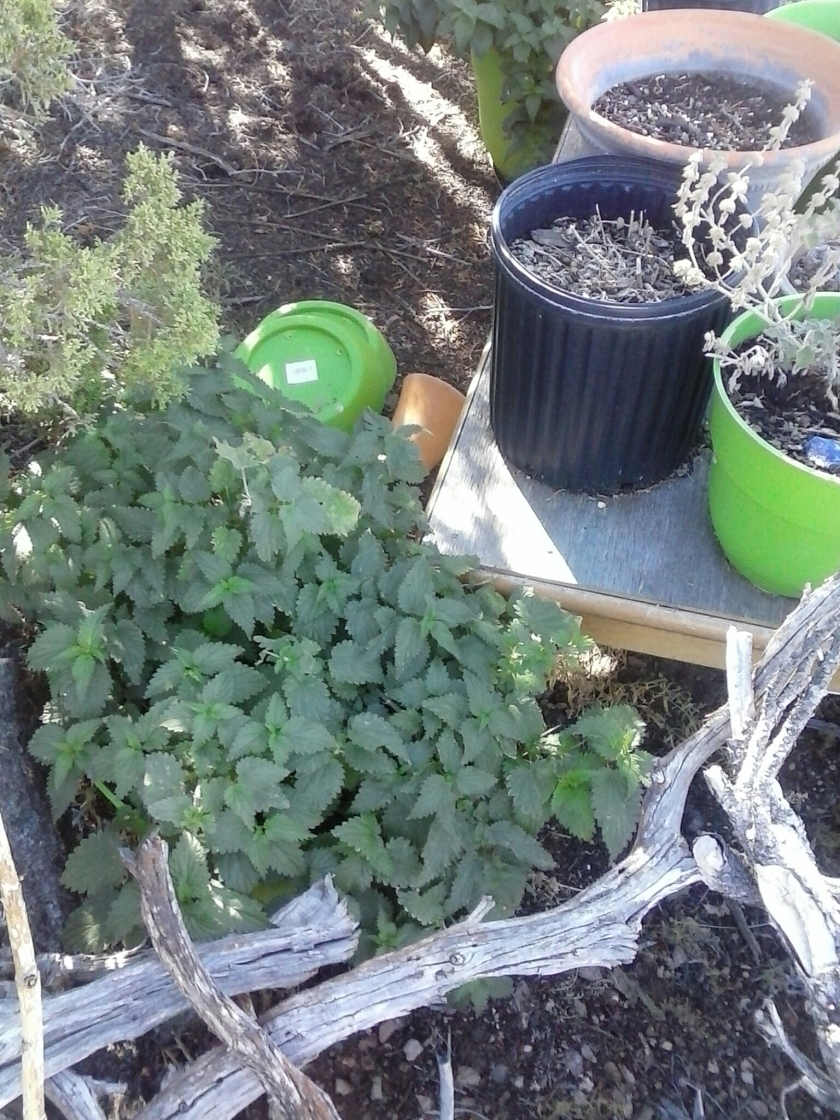Urtica dioica
Family: Urticaceae
Nettles, Stinging Nettles
Nettles grow wild and can easily be cultivated. I transplanted mine from a thinned out patch from an herbal garden. They went into shock when transplanted and appeared to die. But, once roots took hold, they burst forth with life and vigor.
Nettles grow wild and can form high thickets near streams, rivers, shady areas with rich soil.
our container garden of nettles!
Nearby deer ate most plants in our container pots and also our small amaranth patch. We raised the containers to keep the bunnies and jackrabbits from munching our simple gardens. Our simple fences and dead cholla branches were nothing to stop the deer.
We are getting more acquainted to wildlife habits here. We hear the coyotes often and see juniper berries in their scat.
Owls, crows and hawks reign the skies, on hunts and thermal airwaves.
And, in autumn we are hearing different songbirds, on migration we think.
Last year, a favorite wild, clammy ground cherry, I liked to visit, got eaten down to the ground. I kept getting a message to pick one of the berries in its papery husk, to put it on my alter. I amost felt guilty for doing so, but heeded my intuition and did so.
(a gnawed off stem found on another hike.)
When I returned to visit, and saw the Ground Cherry gone, I understood the message and the temporary nature of all things.
The ground cherry became a much needed meal for a wild desert creature. I marvel at how wildlife exists, struggles and thrives in this desert environment.
And, I recognize the huge bounty I experience. Even if fellow humans might laugh or some acknowledge.
In perspective, to feed a herd of deer was an honor.
We read that deer live in the Ortiz, but hadn’t seen many signs. We live in the desert, canyon foothills. In the piñon and juniper ecozone.
So the hoofprints in dirt tracks along with our dinner salad garden gone, we knew for sure.
During a long weekend away, they ate amaranth, lemon balm, garden sage, catnip and peppermint… makes we wonder if they had good dreams those nights. haha!
Recently, on a hike up into the Ortiz, we saw two deer trotting on a ridge, along with fir trees and tiny groves of aspen on some of the peaks. Amazing to think of their treks for food, water and survival with mountain lions which rove for prey.
we thought this could be a mountain lion track…
In the peaks
In our garden, the two pots of nettles survived along with a mostly dead horehound plant. (the bitter and stinging plants were left behind.)
Which makes this post come alive. I used these fresh, growing nettles, for homemade cheese and pesto, even in fall.
Handled carefully because of stinging hairs on stems and the underside of leaves which can sting you. They are filled with formic acid.
And, I used about 12 tops of these nettles to make my homemade cheese. And, about the same number of tops to make nettle pesto! Both flavored with Herbs de Provence.
Here is the salted nettle tea I made. Add a tablespoon of sea salt to the nettle tea to further extract the nettle rennet properties.
Simmer for 30 minutes. Turn off heat and cover the tea and let sit for 10 minutes. Strain the liquid. It will be a light brown color. This is your Nettle Rennet.
I’ve also read that dried nettles work as an herbal rennet too and dried nettles do not sting!
Use one Cup of the strained, salted nettle tea rennet for a gallon of cow’s milk. This is what I have read.
I had half a gallon and used 3/4 of it.
So, heat the milk slowly.
As it heats add the juice of one fresh lemon and spices.
Just before the milk starts to simmer and bubble, while stirring constantly…
add the one Cup of the Nettle tea Rennet.
In my case it made a big bubble when I added the Nettle Rennet. I stirred it gently and the curds formed instantly. The whey separated and the curds were all on top like the picture. You can see the spices too. I turned off the heat once the curds all formed. It all happened at this point really quickly.
I let the curds and whey sit covered for 30 minutes.
Then I lined a colander with a thin dish towel to strain out the liquid. -(the whey) People sometimes save the whey for cooking other recipes.
I squeezed out the excess whey and the cheese congealed quickly. I let it set for a bit, covered with the cloth.
I took the next pictures of the cheese just a few minutes later. A day later in the refrigerator the consistency was even more like a soft gouda. I was really happy with it. I might salt it a bit next time. I guess I am used to the salt in cheese. But, experiment because I really liked it and the salted nettle rennet may impart the perfect amount of salt for you.
This post by Monica Wilde truly inspires. Check out her recipes using a variety of wild plant rennets.
In Cornwall, a famous cheese from an ancient recipe, called Yarg, involves using nettle rennet and nettle leaves wrapped around the cheese to flavor and cure it. The nettle leaf patterns are beautiful.
not too ironically searches for Yarg brought up pictures of pirates! ha!
More of the present day Yarg story here.
Thistle stamens can be used to make cheese rennet as well. Check out my blogpost and links on how to prepare thistles for food and to use thistles for cheesemaking.
You can also make a delicious pesto using nettles.
Super easy and fun to make Nettle Pesto. I have made pesto so many times, I often wing it but keep some basics in the ingredients too.
For Nettle Pesto, steam the tender stems and leaf tops for 2 minutes.
I then felt the leaves and stems for any sting they might still have and 2 minutes of steaming did the trick.
I dried them off with a towel then added olive oil, garlic cloves, juice of one lemon and hulled hemp seeds instead of cheese.
Plus, spices and herbs that suited my fancy at the moment.
Blend it up and voila!
I really liked this pesto and the rest of my cheese as a simple dinner.
I saved most of the pesto to add to tomorrow’s soup as a garnish.
………………………………………………..
The Herbal Goodness of Nettles!
Deb Soule, Herbalist and Biodynamic gardener and plant enthusiast lists Nettles as one of her favorite herbs.
In her book: The Roots of Healing.,
She describes many of nettles virtues and for being
a wonderful fresh green at the close of winter and turn of spring in Maine.
I enlist the many healing properties from Deb Soule’s book here, amidst a few other notes.
Stinging Nettles, just the name can turn some people away. The hairs on the stems and the underside of leaves can be quite formidable. The hairs contain formic acid which can cause painful stings when you touch the hairs of the plant.
This painful sting, is used in urtication therapy.… Urtication derives from nettles, its botanical name: Urtica dioica
Nettle Sting therapy:
Many people have taken nettle leaves/stems of leaves and hit or rubbed them on painful arthritic joints and areas. This brings a rush of blood to the area with subsequently less inflammation, relieving the pain.
Many people swear by this method since the pain from the nettles is temporary compared to the relief they feel within their arthritic joints.
If you get stung by nettles and need to relieve the pain, crushed/bruised plantain leaves or yellow dock leaves, placed on the sting, make an effective remedy.
Nettles are high in iron and greatly help those who are anemic. Steam new tops of nettle leaves or make a tea from fresh or dried nettles. Fresh leaves made into a tincture work best.
Nettles are vitamin and mineral rich so are a tremendous health ally.
Nettles are an excellent tonic for the kidneys and adrenals. In many cases, regular use of nettle tea or tincture can reduce the risk of kidney stones.
Nettles also nourish the liver and blood. And, improves elasticity of veins, helpful for hemorrhoids or varicose veins.
Nettles also strengthens the plasma membrane/outer membrane of cells… making them less vulnerable to inflammation and allergic response.
Nettles work very well in Menopause formulas. Especially when added to these herbs: oatstraw, red raspberry leaves, borage leaves, and siberian ginseng (eleuthero root)
Does your dog scratch and dig at hot itchy spots on his skin? A nettles wash can help.
Likewise, nettles is good in formulas for eczema and skin problems.
The astringent nature of nettles lessens: nosebleeds, uterine hemorrhages and bleeding from cuts.
Drinking cool nettle tea decreases inflammation in kidneys and bladder.
Nettle teas and tinctures have been shown to decrease painful conditions like arthritis and rheumatism for people and animals.
Nettles are commonly used to decrease allergies.
Deb Soule also suggests to let fresh and/or dried nettles to sit over night in a glass jar/pot, of cool or room temperature water, to extract the most vitamins and minerals from nettles.
Drink this health rich tea as is or gently heat and then steep for 15-20 minutes.
For many health benefits and as remedy, 1-3 cups of nettle tea a day for several weeks or months is recommended.
Please seek good counsel outside of this post to determine the best course for you.
And nettles greens, cooked or steamed can be eaten as often as you delight in. lucky us!
Sources:
Include wise stories and counsel from plant wise friends and from Nettles themselves!
Posted Links with gratitude
and this book:
The Roots of Healing. A Woman’s Book of Herbs. by, Deb Soule. Carol Publishing Group, 1995.
And, what else did I do today? Learned to use a chainsaw to harvest our own wood. Sawing dead trees by hand last year is something I will never forget.
Here’s to You and all You Inspire!
